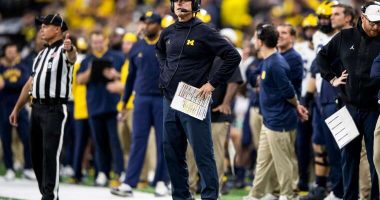Former Minneapolis Police Officer Derek Chauvin’s trial began Monday morning. Chauvin faces three charges, including second-degree murder, in the death of George Floyd.
Floyd, a Black man, died May 25 after Chauvin, a white 19-year veteran of the department, pressed his knee into Floyd’s neck for several minutes.
The nearly nine-minute video of Floyd’s death, in which he can repeatedly be heard saying, “I can’t breathe,” led to global protests last year against police brutality.
The first witness, 911 dispatcher Jena Scurry, said the police officers restrained Floyd for so long that she asked someone whether her “screens had frozen because it hadn’t changed” and “was told that it was not frozen.”
The two other witnesses were bystanders, Alisha Oyler, who was working at a Speedway station across the street, and Donald Williams II, who had been on his way to Cup Foods. Williams will return to the witness stand when the trial resumes Tuesday.
Witness testimony resumes with bystander who said Chauvin used ‘blood choke’ on Floyd
Testimony resumes Tuesday in Hennepin County District Court with a key witness, a bystander, who said he repeatedly pleaded for former Minneapolis police officer Derek Chauvin to release George Floyd from a chokehold.
The bystander, Donald Williams II, testified Monday that his experience as a mixed martial arts trainer and fighter told him that Chauvin’s “blood choke” was squeezing the life out of Floyd.
Williams said he saw Floyd “slowly fade away … like a fish in a bag.”
Floyd died May 25 after being pinned by the neck under Chauvin’s knee for more than 9 minutes, 29 seconds, prosecutors said Monday.
‘I couldn’t watch it,’ George Floyd’s nephew says of graphic video shown in court
George Floyd’s nephew, Brandon Williams, said he walked out of the Hennepin County District Court’s overflow room Monday when prosecutors showed a graphic bystander video during opening statements of Floyd pinned under Derek Chauvin’s knee.
Asked if he had seen the video before, Williams said: “I’ve seen bits and pieces. I still, to this day, haven’t watched it in full.”
Williams said his family had been warned about the graphic video and that he tried to prepare himself.
“As they showed Chauvin kneeling on his neck and like kind of repositioning and just hearing my uncle ask for help and say he couldn’t breathe, I couldn’t watch it,” Williams said.
911 dispatcher testifies officers pinned down George Floyd for so long she thought her video feed had frozen
The first witness in Derek Chauvin’s murder trial, a 911 dispatcher, testified Monday that she alerted a police supervisor May 25 after she watched Minneapolis police officers pin George Floyd to the ground live in a security video.
The dispatcher, Jena Scurry, said it was a “gut instinct” that led her to call a police sergeant who was a supervisor for the officers at the scene. She said she glanced up at wall-mounted dispatch screens between taking other calls and saw a police squad car moving back and forth outside Cup Foods, a convenience store. An employee at Cup Foods had called police alleging that Floyd had tried to pass a counterfeit $20 bill.
Scurry said the police officers restrained Floyd for so long that she asked someone whether her “screens had frozen because it hadn’t changed” and “was told that it was not frozen.”
Scurry was one of three witnesses to testify Monday. The two other witnesses were bystanders, Alisha Oyler, who was working at a Speedway station across the street, and Donald Williams II, who had been on his way to Cup Foods. Williams will return to the witness stand when the trial resumes Tuesday.
OPINION: Derek Chauvin’s defense strategy in George Floyd trial emphasizes pathology
The prosecution told jurors to “believe your eyes” when they watch and hear about George Floyd’s final minutes. And video of the incident may make folks think this is an easy case for prosecutors. But the forensic pathology piece suggests otherwise. (Disclaimer: There is so much that could be written, discussed, argued and debated on the forensic pathology front, but I will touch on only some of the highlights here.)
It’s worth mentioning that, in a manual strangulation incident, the victim can lose consciousness within 10 seconds and die in 3 to 5 minutes. Though this may sound counterintuitive, I suspect we will see the defense “embrace” the fact that Derek Chauvin knelt on Floyd for 9 minutes and 29 seconds — not the infamous 8 minutes and 46 seconds, by the way — as evidence suggesting that Chauvin was not putting significant enough pressure on Floyd’s neck to kill him via asphyxiation.
We have already seen some of this defense strategy play out in opening statements. Chauvin’s lead defense attorney, Eric Nelson, said Floyd displayed “none of the telltale signs of asphyxiation.” There was “no evidence that Mr. Floyd’s airflow was restricted,” he claimed.
I expect that the defense will continue to argue this point throughout the trial, contending that the findings during autopsy suggest that Chauvin was not placing any significant pressure on Floyd’s neck and was not impeding his ability to breathe.
Source: | This article originally belongs to Nbcnews.com











